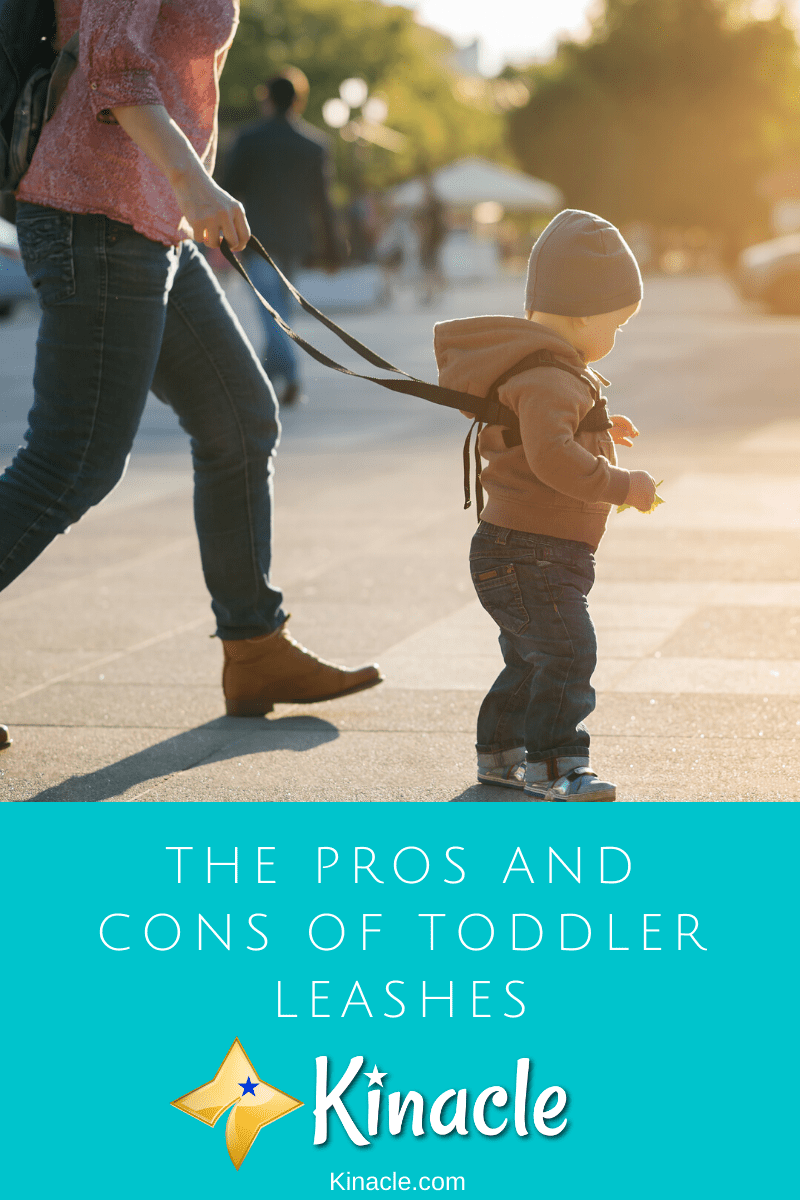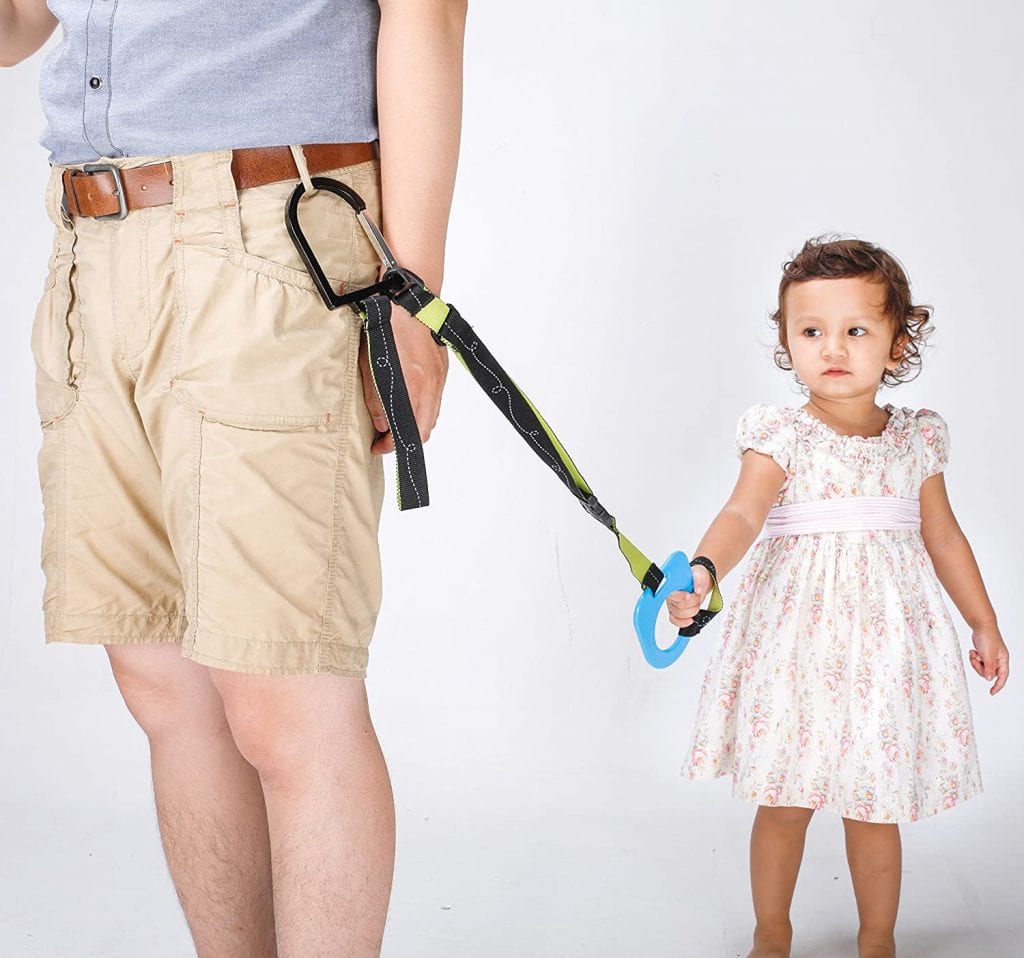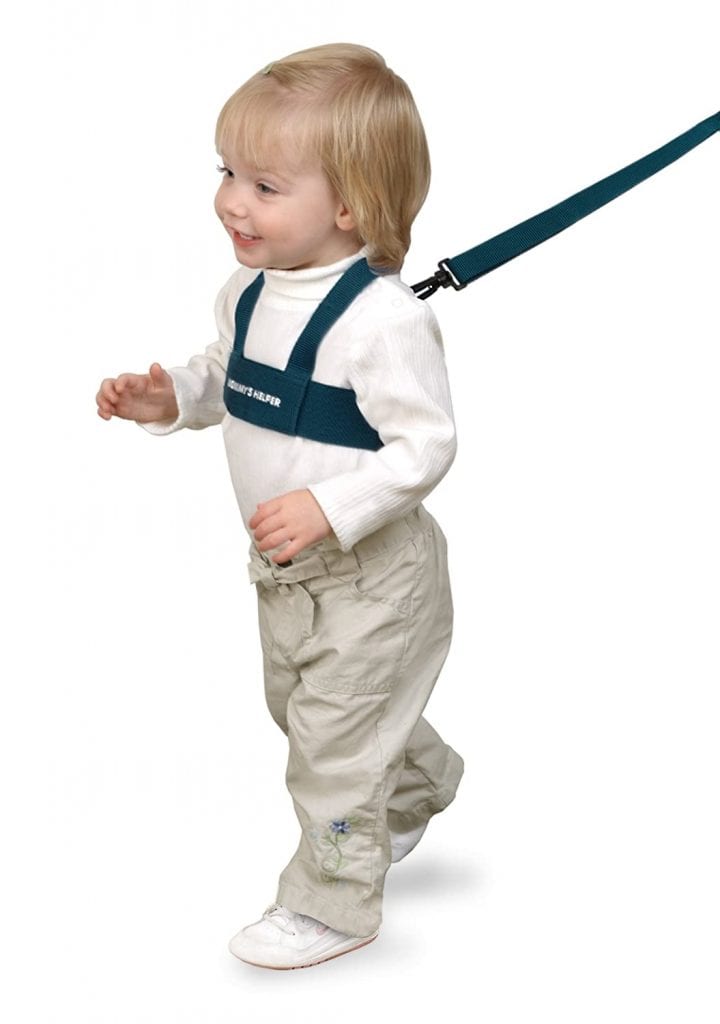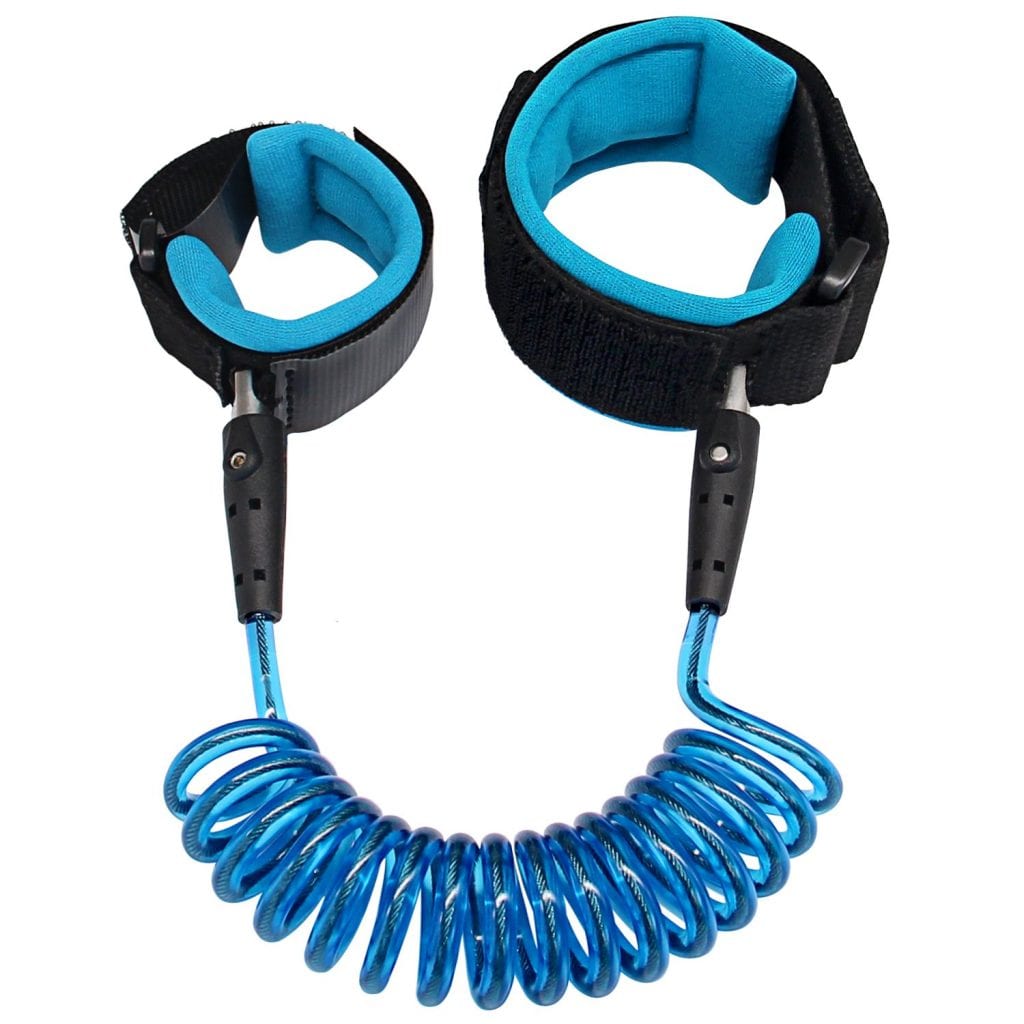
Toddlers are notorious when it comes to staying still in public areas. In just a blink of an eye, they are hanging up the stairs, hiding under somebody’s chair, running towards the street, or lost in the middle of the crowd. These thoughts, if you’d agree, are sure to turn your sanity upside down! So if you’re one of the many parents struggling to keep toddlers by their side when going outdoors, you may also have thought of using a toddler leash. But many parents ask, is it okay? Let’s look over some of the pros and cons of toddler leashes.
What Is A Toddler Leash?
Also termed as walking harness, child tether, or walking rein, a toddler leash is a device used to help keep hyperactive and curious toddlers by their parent’s side when they go outdoors. The other end can be attached or held by the parent while the other end is worn or held by the child. Through this, toddlers can’t easily run, hide, or go anywhere without adult supervision.
There are often plenty of options when it comes to toddler leashes. Typically, these ones are the most common:
Standard child harness
This is the typical kid leash, which consists of a harness that can be worn over the shoulder, waist or even the crotch of the child. At the back or side, the harness has a lead (also called rein or tether) that can be held by an adult accompanying the child.
Backpack leash
A toddler backpack leash works similar to a standard kids harness, but it has a small bag at the back. These backpack leashes are often designed with a stuffed animal, or a cartoon character. This type of leash is more popular because they are attractive to kids, softens the look of the harness, and are more convenient for parents.
Wrist link
It consists of two wrist straps that are linked by a sturdy, elastic material like a coiled plastic wire. Some wrist links are claimed to be shock absorbent and adjustable to prevent undue strain on the arms. There are varieties featuring 2 in 1 wristbands that can be attached to one parent and 2 kids at the same time.
Wrist links are popular for children who have outgrown their harness, yet need to be closely supervised by an adult when walking outdoors.
Walking handle

This one looks like a wrist link, but the other end is held by the child instead of being strapped. It resembles the hanging handles that we see inside the trains. With a walking handle, toddlers can freely move their hands and stroll within a safe distance from the adult. It is also a nice way to teach toddlers how to behave outdoors since they have more independence in this type of leash.
As you can see, a child leash can be helpful in several ways, but not all parents and parenting experts are advising for its use. So if you’re currently deciding whether to use a toddler leash or not, let’s take a quick look at the pros and cons of this device.
Pros / Advantages of Toddler Leashes
Outdoor safety
The primary concern of parents putting kids on a leash is their safety when going out in crowded places or busy streets. In these instances, a toddler leash can help keep your hyperactive toddler away from imminent danger.
Going out with two or more children
Multitasking is a skill of every parent, but sometimes, it becomes hard to keep every child behaved while you are out in public venues. If you’re a parent of a twin toddler, or you need to bring along your older children for a walk, then a kid leash can help ensure that everyone stays by your side while they need utmost supervision.
Multifunctional
A kid’s backpack leash is great for bringing along small essential items like a snack or a bottle of water as you walk with your toddler. Some varieties of child harness can also function as safety devices when the child is placed in the stroller or when you want to ride a motorcycle with your toddler.
Children with special needs
While many parents have the chance to decide whether or not to use a leash, some parents require a leash in order to leave the home safely with their child.
A toddler with autism or ADHD can be very unpredictable, impulsive, and risk their health (or life!) without realizing that they are in danger. In these instances, a child leash can be very useful to keep these children safe while they wander off the places that can quite be risky for them.
Cons / Disadvantages Of Toddler Leashes
Risk of tipping over
Since toddlers are just learning about their speed and balance, some of them may accidentally tip over after the leash restricts their sudden movement. This problem is most commonly associated with wrist links.
Risk of bone or muscle injury
Another issue about child leashes, particularly the ones attached to the wrist, is the sudden force or impact when the child moves around. Toddlers may suddenly run, pull, sit, or jump without alerting their parents or caregivers, and these movements can simultaneously strain the bones and muscles on their arms.
The child may get irritated.
Most, if not all toddlers do not want to get restrained. Your child may not feel comfortable wearing a leash. Some toddlers may literally have irritations over their skin when the leash is worn on their wrist.
To minimize this problem, you may use harnesses that are worn over the clothes of your child, so it is less likely to cause skin irritations. A backpack harness with cute animal designs, a cartoon character, or a Disney princess is also more attractive for young children and makes it less likely to resist wearing them.
Click here to shop for backpack harnesses on Amazon!
Social discrimination
Since the public has divided opinions about the use of toddler harness or leashes, you may encounter some disgusted looks or harsh comments from other people who do not favor the use of leash for kids. This is why many parents prefer backpack harnesses, as they are more discreet when used in public areas.
Conclusion
Just like other devices, a toddler leash can be beneficial or risky depending on your purpose and your manner of using it. If you decide to use a leash to keep your toddler safe, it is essential to weigh your options carefully and select a high-quality item that can serve the purpose of a child safety leash. At the end of the day, it is you who knows what’s best for your kids, whether you prefer to use a leash or not.



Leave a Reply